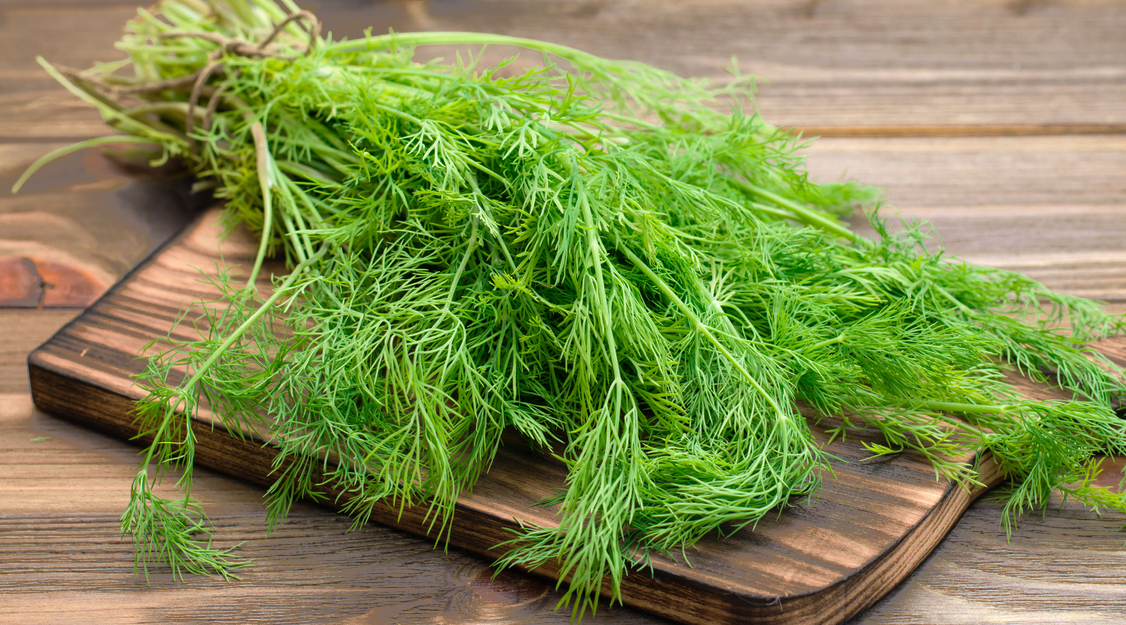Dill

Health Power
The significant health benefits of dill come from unique phytonutrients, including monoterpenes (carvone, anethofuran, and limonene) and flavonoids (kaempferol and vicenin). Monoterpenes activate the antioxidant enzyme glutathione-S-transferase, which marks dangerous free radicals for destruction by other compounds. Dill’s volatile oil has anti-bacterial properties. Like garlic and thyme, dill inhibits the growth of many common bacteria. Dill is also a great addition to dishes for its mineral and fiber content. A good source of calcium, dill contributes to bone maintenance. Its iron helps blood deliver oxygen to tissues. Fiber promotes smooth digestion and absorption of nutrients. Munching on dill seed has been used to stop hiccups. Making tea with dill is a popular cure for indigestion.
Vitamin and Mineral Content
Vitamins – traces
Minerals – Iron, Manganese and Calcium
Disease Prevention
In the small quantity dill is eaten, it does not significantly reduce disease risks. But added to dishes it helps prevent infection by pathogenic bacteria and bone loss (osteoporosis).
How to Grow
Dill is an attractive, fast-growing annual herb native to the tropics. Many consider its taste a perfect complement to fish. The seeds are also used for flavoring pickles. The pleasant yellow flowers make a great plant for bordering. Dill plants prefer sunlight and well-drained soil. Plant in the spring. Amend the soil with compost or planting mix. Sow the seeds directly in the bed outdoors after the last frost when the soil begins to warm up. Thinly place the seeds in small rows spaced about 1 foot apart. Later thin the seedlings to 1 foot apart. If growing for the leaves, make successive sowings every month from mid-summer. Dill grows well in pots, too. Space them out 1 foot apart in pots. Avoid planting near their kin, fennel, as they may cross pollinate. Keep weed-free. Water enough to keep soil moist. Pick leaves fresh as needed. Or dry and collect leaves and seeds. If drying leaves, harvest the plant young before it flowers. Tie stems together in small bunches and hang upside down in a shady, well-ventilated area. If collecting seeds, cut just as seeds ripen, then hang upside down in small bunches in a dry, shady, well-ventilated area.
Insect Control
No pest issues. Often used to attract beneficial insects in companion planting, including parasitic wasps and pollinating bees. Plant this herb near fruits and vegetables to help control pests and attract pollinators to get generous yields. If planted near tomatoes, dill strongly attracts hornworms, which are easier to spot and remove from dill.
Tips
Difficult to grow from transplants. Another way to collect seeds: Remove the whole flower head when the seed pods turn brown, place them in a paper bag and shake carefully. Seeds will fall out, and you can separate them from other plant matter.





